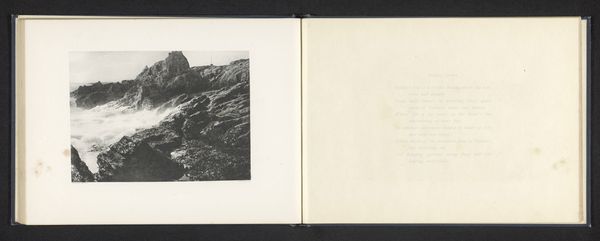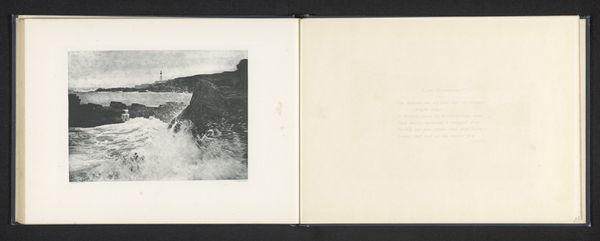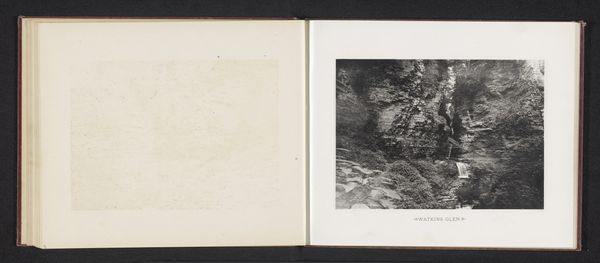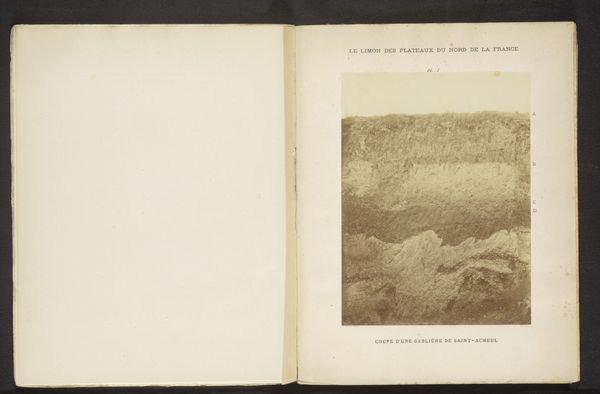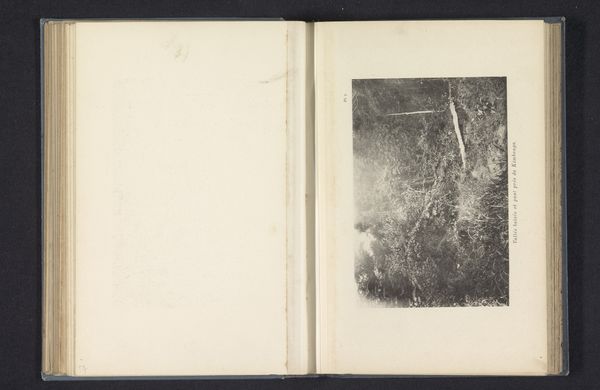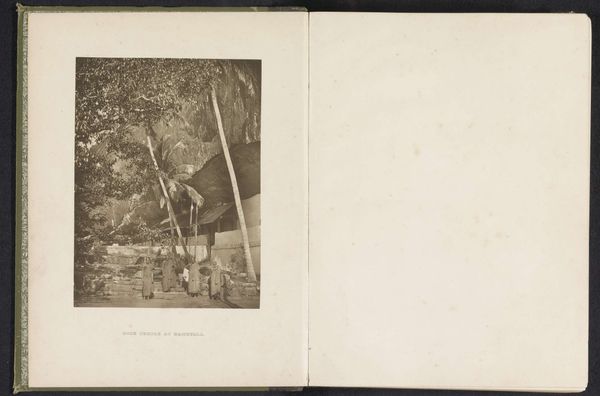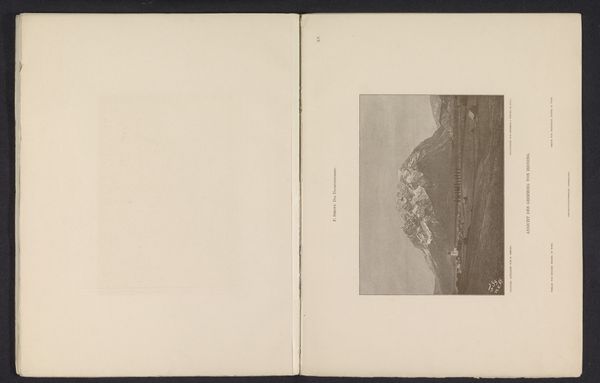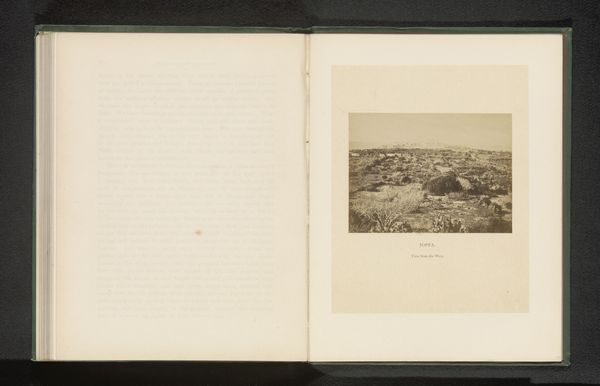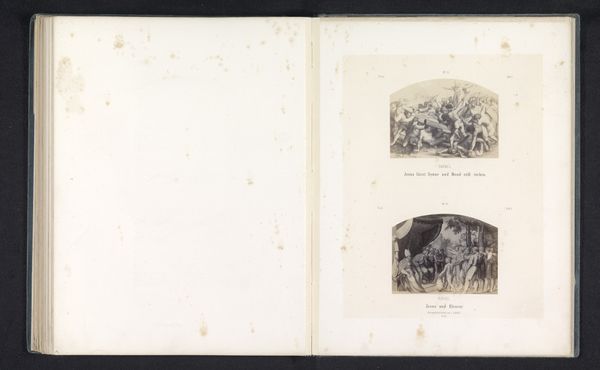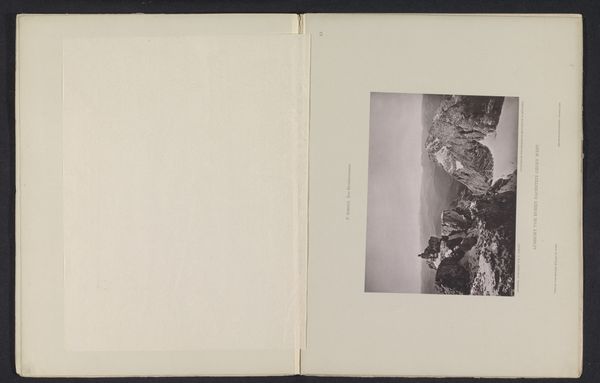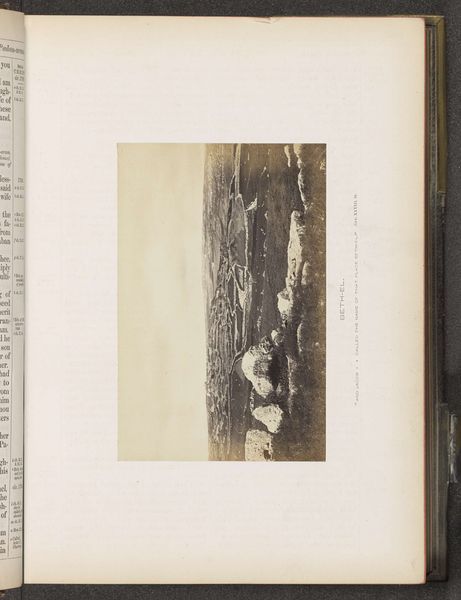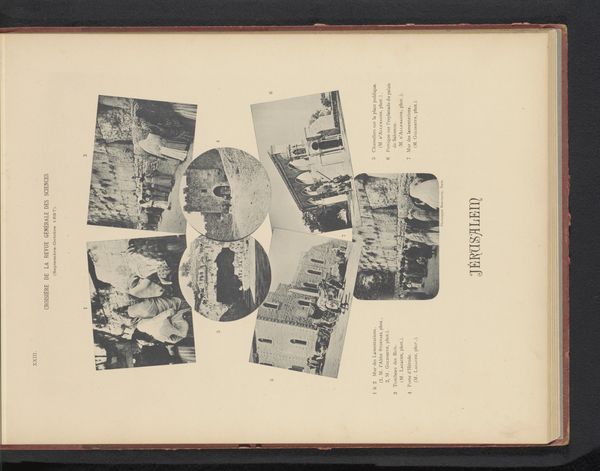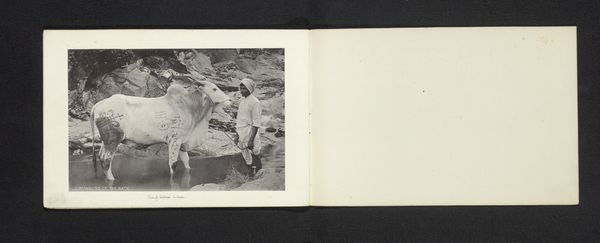
photography, albumen-print
#
pictorialism
#
landscape
#
photography
#
albumen-print
#
realism
Dimensions: height 180 mm, width 225 mm
Copyright: Rijks Museum: Open Domain
Curator: Let's turn our attention to this tranquil landscape scene titled "Koeien bij een plas water in New England," which translates to "Cows by a puddle of water in New England." It's an albumen print, dating back to before 1890. The artist, unfortunately, is anonymous. Editor: It’s incredibly evocative. I immediately feel a sense of calm looking at the reflection in the water, and the positioning of the cows gives it a sense of depth that's very peaceful. Curator: The stillness you perceive may be partly due to the photographic techniques of the era. Early photography necessitated long exposure times, imbuing scenes with a sense of frozen temporality. There's a blend of realism and pictorialism at play here too, notice the soft focus and composition designed to be artful. Editor: I see it. There's a carefully constructed nature to it, despite appearing like a slice of rural life. Were images like this commonly circulated at the time, offering a romantic view of agriculture? Curator: Certainly, the late 19th century saw a rise in depictions of pastoral landscapes, aligning with urbanization and industrial growth. It provided an idealized vision of a pre-industrial world, offering solace amid societal change. Notice how the stonewalls create symbolic divisions in this New England pastoral. Editor: So it’s a controlled narrative in some ways. The photographer isn't simply documenting life as it is, but rather creating an idealized image of it. And the puddles reflect the cloudy skies and suggest to me a subtle message regarding the uncertain temporality of farming work as a form of livelihood, maybe. Curator: An excellent interpretation. One must consider the accessibility and public role of images like this; mass reproduction made it a powerful tool for shaping societal attitudes and, indeed, cultural memory around what it meant to live off the land. The images are both beautiful and quietly revolutionary because they give agency to an old way of life. Editor: Precisely. This image encourages me to question what visual artifacts endure and how those documents subsequently affect our perceptions of both history and our everyday experience. Curator: And it inspires further reflection on how we can reclaim the narratives constructed around agrarian spaces, allowing room for multiple stories beyond conventional imagery.
Comments
No comments
Be the first to comment and join the conversation on the ultimate creative platform.
